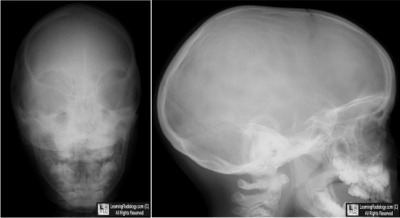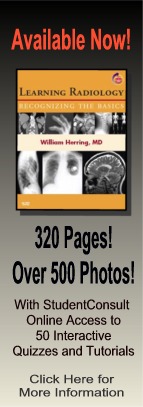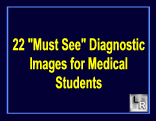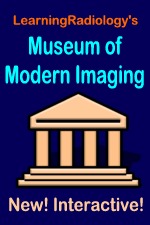| Cardiac | |
|---|---|
| GI | |
| Bone | |
| GU | |
| Neuro | |
| Peds | |
| Faculty | |
| Student | |
| Quizzes | |
| Image DDX | |
| Museum | |
| Mobile | |
| |
Misc |
| Videocasts | |
| Signs | |
Learning
Radiology:
Recognizing
the Basics
Now Available
on the Kindle
and IPad
LearningRadiology Imaging Signs
on Twitter
![]()
Follow us on
What is the most likely diagnosis?
- 18 month-old with skull deformity

Frontal and Lateral Skull Radiograph
- Elevated Intrancranial Pressure
- Craniosynostosis
- Apert's Syndrome
- Maxillary Sinusitis
- Craniopharyngioma
Additional Image - None
![]()
Additional Images
None
![]()
Answer:
2. Craniosynostosis
More (Click Discussion Tab)
Craniosynostosis
General Considerations
- Premature fusion of one or more of the cranial sutures
- Can be primary, resulting from a defect in ossification, or
- Secondary (more often) from failure of growth of the brain
- Brain growth is the major factor in keeping sutures open
- The head shape is frequently abnormal
- The sagittal suture is affected most commonly (50-60%), followed by the coronal, metopic and lambdoid
- Skull growth is restricted perpendicular to the orientation of the suture
MORE . . .
.
This Week
18 month-old with skull deformity |
Some of the fundamentals of interpreting chest images |
The top diagnostic imaging diagnoses that all medical students should recognize according to the Alliance of Medical Student Educators in Radiology |
Recognizing normal and key abnormal intestinal gas patterns, free air and abdominal calcifications |
Recognizing the parameters that define a good chest x-ray; avoiding common pitfalls |
How to recognize the most common arthritides |
LearningRadiology
Named Magazine's
"25 Most Influential"

See Article on LearningRadiology
in August, 2010
RSNA News
| LearningRadiology.com |
is an award-winning educational website aimed primarily at medical students and radiology residents-in-training, containing lectures, handouts, images, Cases of the Week, archives of cases, quizzes, flashcards of differential diagnoses and “most commons” lists, primarily in the areas of chest, GI, GU cardiac, bone and neuroradiology. |



